- Home
- TV History
- Network Studios History
- Cameras
- Archives
- Viewseum
- About / Comments
Skip to content






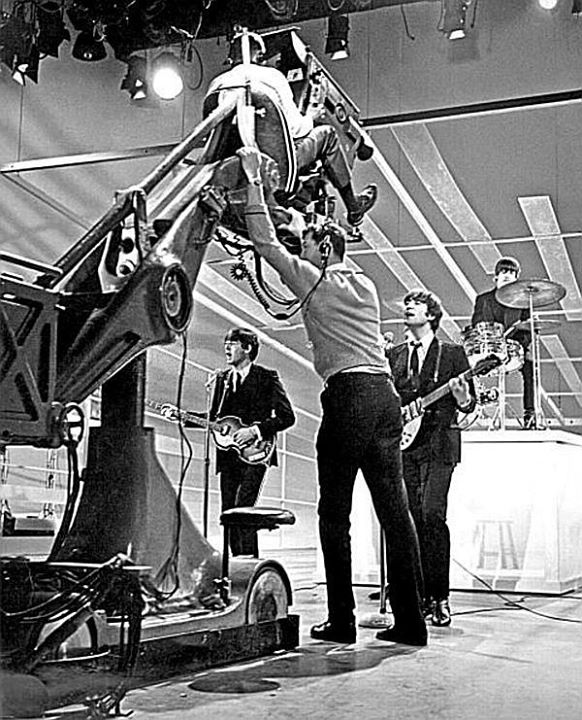



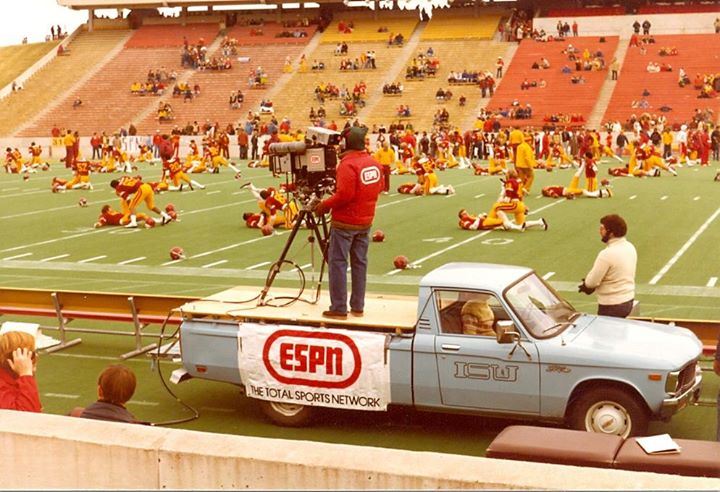



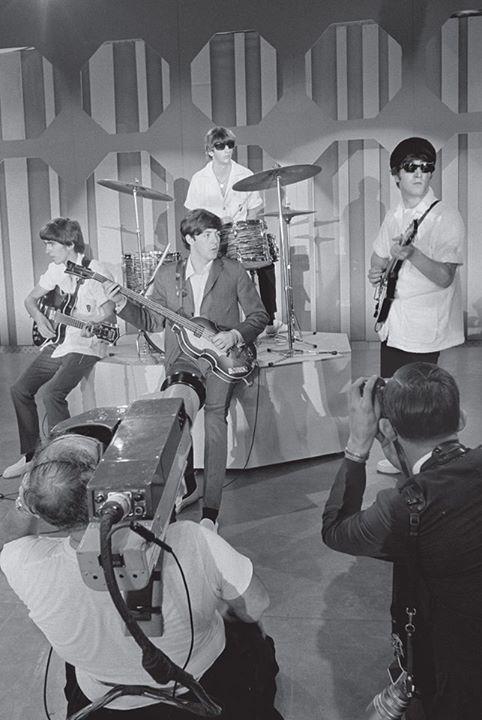



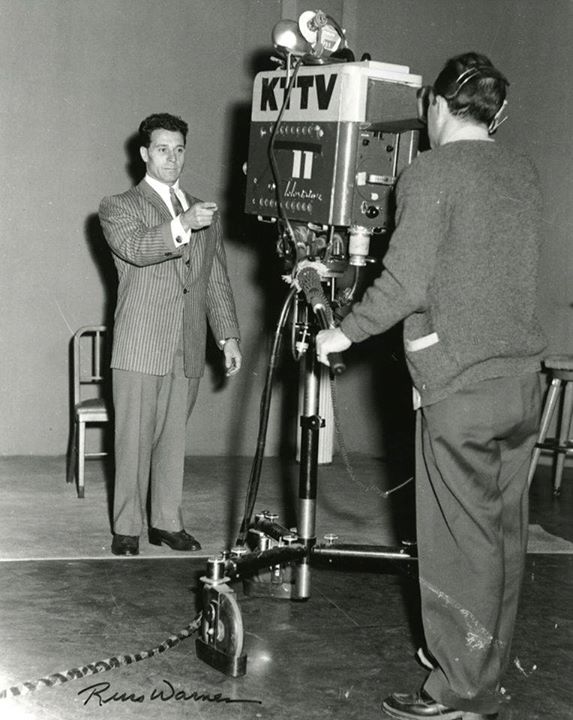



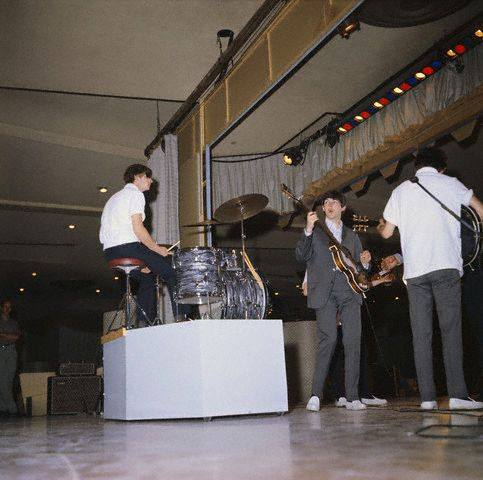

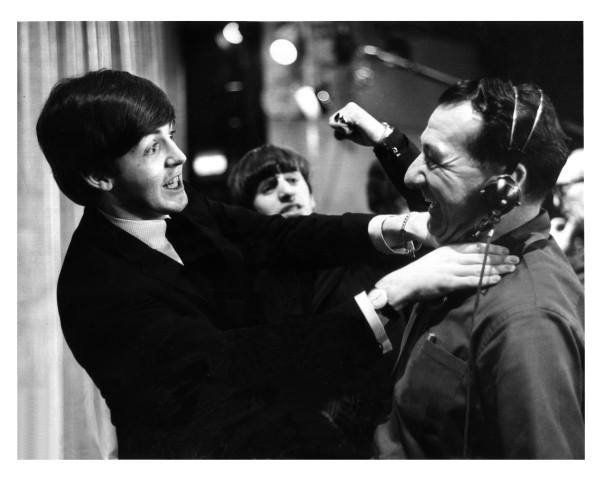

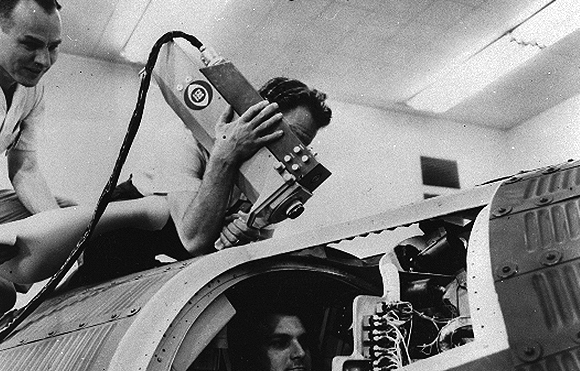

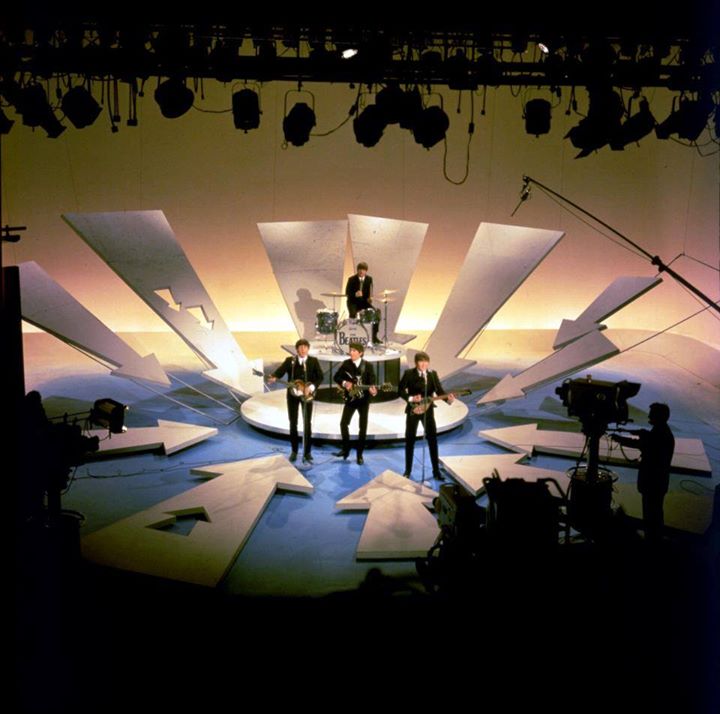



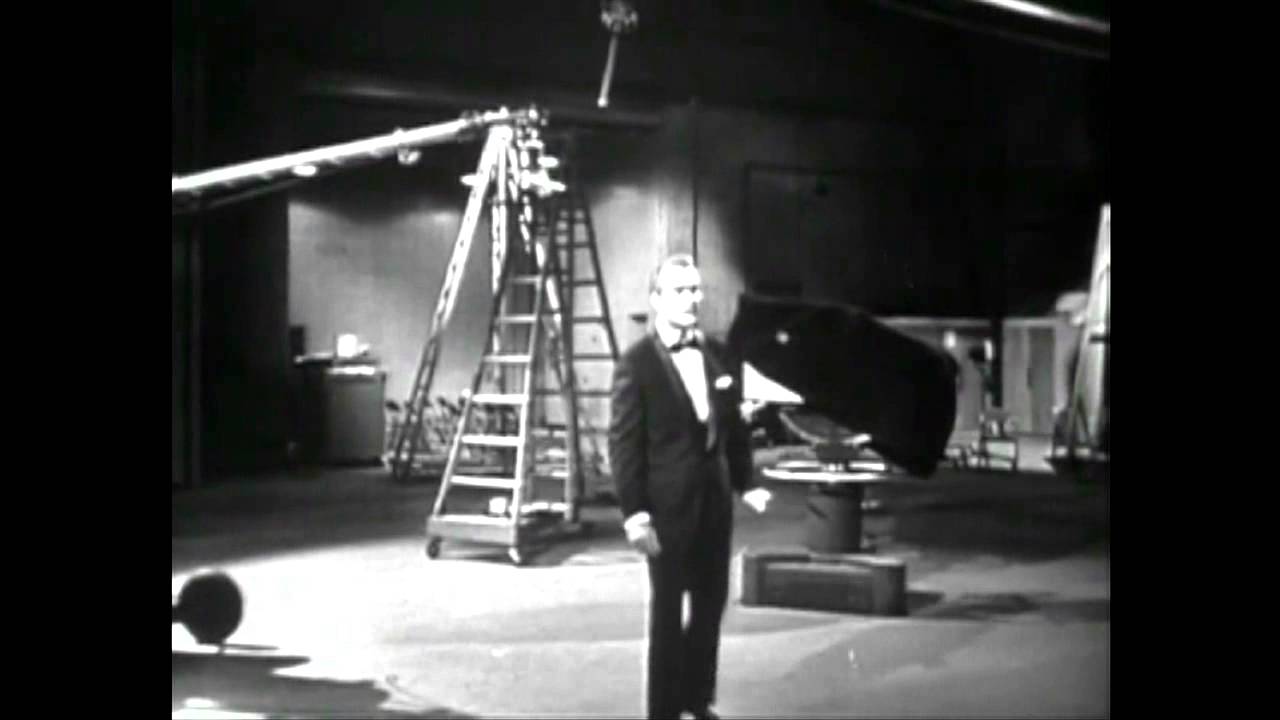



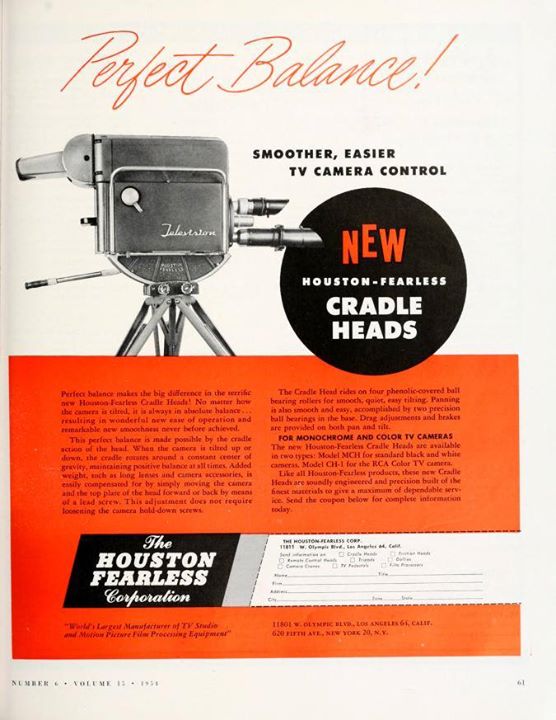

Posts in Category: TV History
Page 95 of 136
« Previous
1
2
3
4
5
6
7
8
9
10
11
12
13
14
15
16
17
18
19
20
21
22
23
24
25
26
27
28
29
30
31
32
33
34
35
36
37
38
39
40
41
42
43
44
45
46
47
48
49
50
51
52
53
54
55
56
57
58
59
60
61
62
63
64
65
66
67
68
69
70
71
72
73
74
75
76
77
78
79
80
81
82
83
84
85
86
87
88
89
90
91
92
93
94
95
96
97
98
99
100
101
102
103
104
105
106
107
108
109
110
111
112
113
114
115
116
117
118
119
120
121
122
123
124
125
126
127
128
129
130
131
132
133
134
135
136
Next » This Is The RCA TK44 Prototype Camera
On February 1, 2014
- TV History
Ever See One Of These In Person?
This is the RCA TK44 prototype camera in action at the 1967 NAB. It used an Isocon tube in the luminescence channel and three lead oxide tubes in the chrominance channels. The TK44A dropped the luminescence channel and replaced the lead oxide tubes with Plumbicons and new optics. It cost $74,800 and in January of 1969, the first four were shipped to WBAP in Dallas/Ft Worth for use in their new mobile unit.
There may have been a mock up of this camera made for static display in another part of the ’67 RCA exhibit, but sadly, neither were saved. Actually, none of the RCA prototype cameras exist. I was told by Lou Bazin, (who was the main development engineer on the TK44A and B, TK45, TKP 45, TK76 and many others), that once a camera went into production, the prototypes were picked over for parts in use on other projects. A TK48 was built, but was trashed along with a lot of trade in cameras and new, unshipped and unfinished cameras at Camden when the sale to GE went through and the broadcast division closed.
Beatles 50th Sullivan Anniversary Count Down…8 Days
On February 1, 2014
- TV History
Beatles 50th Sullivan Anniversary Count Down…8 Days
On February 9, 1964, The Beatles were not the only British singing stars to make their American television debut. As you’ll see in the screen shot from the same night, Davie Jones was there too, but not as The Monkey’s lead singer. He was playing the roll of the Artful Dodger in ‘Oliver’ which was a huge hit on Broadway. He had also played the part in London before the show came to the US. Posing backstage with The Beatles is his co star, Georgia Brown who played the roll of Nancy. When The Beatles hit the stage, Davie watched from the left side of the stage and later said to reporters, “I watched the Beatles from the side of the stage, I saw the girls going crazy, and I said to myself, this is it, I want a piece of that.” He got it too! I met him a few times and have to tell you, he is one of the nicest people you could ever meet. Rest In Peace Davie.
Introducing The RCA TK30: October 1946, “Broadcast News”
On February 1, 2014
- TV History
Introducing The RCA TK30: October 1946, “Broadcast News”
This is the entire edition of RCA’s “Broadcast News” magazine that features this brand new camera in a very detailed, multi page story. The cover page photo is in relation to the first ever use of this camera at the Joe Lewis – Billy Conn boxing match held at Yankee Stadium. Even after taking in the TK30 story, it’s fun to browse the rest of this issue for an interesting look back at audio boards, transmitters and more technology that, at the time, was “state of the art”.
Zoomar And The Right Wing Conspiracy
On January 30, 2014
- TV History
Zoomar And The Right Wing Conspiracy
As mentioned in the post below, Zoomar lenses were in use at CBS Studio 50 in the 1950s and here is an RCA TK11 fitted with one. As for the “right wing conspiracy”, well…take a look behind Ed. In essence, there was no right wing to this stage as it was very shallow and there was no room to store props there. Sullivan’s long time stage manager Eddie Brinkman, came up with a dual purpose solution. The scaffold you see here doubled as a quick access prop storage platform as well as a camera platform. Out of sight is the third story home of one of the six cameras that were in use on this stage which at the time was also home to ‘The Jackie Gleason Show’ and the Gleason produced ‘Stage Show’ that starred Tommy and Jimmy Dorsey.
Beatles 50th Sullivan Anniversary Count Down…10 Days
On January 30, 2014
- TV History
Beatles 50th Sullivan Anniversary Count Down…10 Days
Up close and personal! Looking at how close the crane is in these shots is an interesting reminder that the Studio 50 stage is only 29 feet deep and 37 feet across with a very shallow stage right. There was a 10 foot crane ramp, but without the use of a zoom lens, you have to get in to get the close ups. As you will see in the next post, the Zoomar lens was used on the Sullivan show as early as the late 50s, but the Marconi Mark IV could not take the standard Zoomar because of the iris control motor in the center of the turret. I have heard that the first Mark IVs arrived at CBS in mid 1963. The only zoom lenses that would fit this, the RCA TK60 and the EMI 203 (all of which had iris motors on the turret) would be a huge Angenieux box lens and the Varitol III which NBC was using on many TK41s.


A Nice Look At A TK30…
On January 30, 2014
- TV History
Delco Parts Commercial Form NBC’s ‘Wide, Wide World’
Here’s a nice look at an RCA TK30 on a crane as this announcer uses it as a prop in this live spot for Delco. At the start of this clip is the host of the show, Dave Garroway. ‘Wide, Wide World’ began in June of 1955 as part of the ‘Producers Showcase’ and aired once a month on Sunday afternoon as it rotated with three other Showcase presentations each month. The 90 minute show was so well received, it became a regularly scheduled Sunday afternoon show just five months later and stayed on the air till 1958. This show achieved many television firsts including being the first to broadcast live from Canada and Mexico during one of their Sunday shows. Another time, NBC used 50 live cameras on one episode that took viewers from a street car ride in San Francisco, to a rodeo in Ft. Worth, to a glass bottom boat tour of Silver Springs in Florida…all done live. Thanks to Ira Gallen for sharing this.


In The Beginning…ESPN
On January 29, 2014
- TV History
In The Beginning…ESPN
On the right is ESPN’s first remote truck, pictured here at Compact Video in Burbank around 1979. The unit was called “140” and looks to be equipped with either Hitachi or Thomson cameras. The photo on the left is also from the early days and the camera on the pickup is probably hooked up to “140” at what may be Iowa State. Thanks to David Sturtevant for the photos.
CBS Studios 53 to 56…Liederkrantz Hall, 111 East 58th Street
On January 29, 2014
- TV History
CBS Studios 53 to 56…Liederkrantz Hall, 111 East 58th St
This facility was an old German social club building that CBS leased around 1950 for conversion to a production center. It’s four studios were moderate in size but were adequate for the many soap operas that came from this site, including some of the very first of those shows. It’s main distinguishing point was that this was the only CBS location that had enough telecine projection equipment to support a news program, so this became the home of Douglas Edwards and the daily CBS news broadcast. Although it was where the broadcast came from, unfortunately it was not where the news came from. The CBS newsroom was about 8 blocks away at the 485 Madison Avenue headquarters building and this is the subject of many stories of last second arrivals by news scripts, new film and news men, especially on rainy days. This was also the only CBS facility known to have used Dumont cameras. In the photo below, we see a couple of Dumont 124B cameras shooting what looks like election coverage of some sort. Liederkarntz was decommissioned in 1964 when the CBS Broadcast Center went into operation. I don’t know who the man in the photo is, but if you do, let us know. It looks a little like a young Roger Mudd, by maybe not.
Beatles 50th Sullivan Anniversary Count Down…12 Days
On January 28, 2014
- TV History
Beatles 50th Sullivan Anniversary Count Down…12 Days
Here’s the HUGE SURPRISE I promised yesterday! Who knew that CBS had sent one of their early hand held video cameras to Miami to get shots for the February 16, 1964 ‘Ed Sullivan Show’? I just found this awesome photo a few days ago and it is the first time I have ever seen one of these cameras used on anything other than space shots. I’ve never even seen one of these prototype cameras in use at a sporting event. This photo was taken at the morning sound check which was followed by a dress rehearsal and finally that night’s show. This is one of about 6 cameras Ikegami built in a partnership with CBS Engineering around 1962. Unlike the RCA/NBC portables, I think this has an Image Orthicon tube and not a Vidicon.
Jerry Lewis, Creator Of Motion Picture Video Assist
On January 28, 2014
- TV History
Jerry Lewis, Creator Of Motion Picture Video Assist
Although we have been here before, this is a new photo that shows and RCA Vidicon camera mounted just above the optical viewfinder on this Mitchell 35 BNC camera. Lewis started using this process in 1960 while shooting ‘The Bellboy’, but I think this photo is from the 1963 set of ‘The Nutty Professor’. By 1968, a beam splitter was incorporated into this dual camera arrangement that let both cameras see the same view. Director Blake Edwards was the first to use the beam-splitter single-camera system invented by engineer Jim Songer in the 1968 film ‘The Party’.
The Baughman Pedestal
On January 28, 2014
- TV History
The Baughman Pedestal
This is my favorite light weight camera support…The Baughman Portable Pedestal made by the E J Baughman Company in El Monte CA. This is the earliest version that had a smaller central column that was only adjustable with a wrench and debuted around 1955. Soon after, the center column became a much thicker chrome plated item with a quick release lever and another version featured a hydraulic pump and handle. This photo shows Jack LaLanne at KTTV in Los Angeles where he moved his show in 1957 from it’s original home at KGO in San Francisco where it started in 1953.
Television In Simpler Times…
On January 28, 2014
- TV History
Television In Simpler Times…
Covering the Inglewood Christmas parade November 23, 1962, here’s a KTTV RCA TK30 equipped with a Taylor Hobson Varotal Field Lens. Having been the Los Angeles Dodgers station since their move there in 1958, the station had a lot of remote equipment and a staff experienced in putting cameras together on top of trucks and stadium bleachers. FYI, the light colored top part of the camera is the removable viewfinder that attaches easily to the bottom darker part. On top of the TK30 viewfinder is a leather strap handle for easy carrying and although most don’t know it, RCA made a carry handle top for the TK30 camera body as well that would make getting it to the top of this truck a lot easier.
Beatles 50th Sullivan Anniversary Count Down…13 Days
On January 27, 2014
- TV History
Beatles 50th Sullivan Anniversary Count Down…13 Days
Welcome to Miami Beach! The Beatles second live Sullivan show came from The Deauville Hotel on February 16, 1964. Having arrived a few days early, the band, among other things paid a visit to Cassius Clay, took a few dips in the ocean, and on Saturday had worked in a practice session for the next day’s show (right). On show day, The Beatles would be in the Deauville ballroom three times. The first visit (left and center) were for a sound check to get the levels right. The second time was for a late afternoon dress rehearsal of the whole show and the final time would be for the show, which almost got delayed because the security detail could not get them through the crowd fast enough as there was no “stage entrance”. There were six cameras (mostly TK30s) in the hall with two coming from WTVJ (center) and the rest coming from CBS including something special that we’ll see tomorrow.
The Amazing Life Of Eddie Brinkmann…Sullivan Stage Manager
On January 27, 2014
- Archives, TV History
Here is a great, four page story that covers 20+ years of ‘The Ed Sullivan Show’ from the guy that was the stage manger for the whole run, BUT HIS PERSONAL ARCHIVES ARE HERE, SO USE THE SEARCH FEATURE AT THE TOP RIGHT OF THE PAGE TO FIND THEM ALL!
This is a one of a kind look behind the scenes of real television history as told by Eddie Brinkmann. Above, Brinkmann and McCartney playing around, letting of a little nervous energy before “the really big show”!
CBS’s First Hand Held Camera & The Back Story
On January 27, 2014
- TV History
In Preparation For A HUGE Surprise!
Tomorrow, I will be posting a hugely surprising photo…one that I am sure you have never seen. To prepare you, this post is about the CBS/Ikegami partnership on the development of an ENG camera that began around 1961. A year or so back, Dr. Joe Flaherty, who is still a Senior VP of Engineering at CBS told me the story that he was deeply involved in. In a nutshell, CBS wanted an ENG type camera for their remotes and news departments. Ikegami had made some progress in their efforts so CBS decided to team up with them on a development project. There were plans for a cabled and a wireless version but the best progress came on the cabled version and by 1962, CBS had a prototype in the field and you can see it in action below at the McDonald Douglas plant in St. Louis where the Mercury spacecraft was made. By 1964, this camera had a manual zoom lens and a different viewfinder but the camera body stayed about the same. A couple were built for use at the CBS O&O station KMOX in St, Louis and that would be the first station in the nation to have hand held news gathering cameras, but not a lot was made of it as CBS wanted a low profile on their R&D with Ikegami. The network also had a couple that were used occasionally in NYC but mostly they saw action at Cape Canaveral in the early 60s which was a good place for field testing. The b/w photos show the camera in 1962 and the color photo shows the modified version in November of 1966. I think the CBS cameras used small IO tubes, but I’m not sure. RCA had hand held Vidicon cameras that NBC used as far back as 1952 and updated versions in the 60s, but the hand held cameras didn’t really take off till the RCA color version…The TK76 was introduced in 1976. The problem with the late start for the hand helds was the color conversions in 1965. There were some good B/W hand helds but with color newscasts, the images looked out of place.
Beatles 50th Sullivan Anniversary Count Down…15 Days
On January 26, 2014
- TV History
Beatles 50th Sullivan Anniversary Count Down…15 Days
Today, A Primer In: How to tell which performance is which.
With the anniversary approaching, you’ll see a lot of photos and clips and with this guide, you can tell which performance is which. The Beatles first appeared on Ed Sullivan these three consecutive Sunday nights…February 9, 16 and 23 1964. The February 16th show was done live from Miami, but all four of their other performances were done at CBS Studio 50 on February 9, with the first performances of the day taped for air on the 23rd. The Beatles appeared twice in each show and each time, the song set and stage set was different. Here are the Studio 50 stage sets in order of air dates. The first live performance set featured big arrows (at the top of this post) and the second live performance set featured hanging stripes (just below). The first appearance of the taped February 23 show was the only use of a blue flat wall set with a wedge facade, which was widely used on many Sullivan shows and matched his hosting corner backdrop. The final set of the February 23 show featured the free-standing art nouveau columns. Now you know!
The First Home Of CBS…485 Madison Avenue, At 52nd Street
On January 26, 2014
- TV History
The First Home Of CBS…485 Madison Avenue, At 52nd Street
This photo shows the building still under construction in April 1927. CBS Radio Network went on the air September 18 of that year with 18 stations and operated out of the office for the New York station at Steinway Hall on West 57th Street in Manhattan. Exactly two years later, September 18, 1929 moved into the top six stories of this building. CBS Radio studios 1 through 9 were located here. Around 1936, CBS Television studios 31 and 32 were added here and a year later, television added studios 41 through 44 at Grand Central Station at 15 Vanderbilt Ave on the third floor and that was it for television till around 1944 when about a dozen other locations were opened in theaters around the city. CBS also had radio studios at 49 East 52nd Street. Around ’63, plans were being made to move and corporate headquarters had plans on the drafting table for the “Black Rock” building at 51 West 52nd Street at the corner of Sixth Avenue. On July 25, 1964, the last radio broadcast from 49 East 52nd was “Farewell To Studio 9” with a long list of stars and clips that had come from that famous studio. CBS Radio newsman Steve Rowan was the last to broadcast from the 485 Madison location on July 25 and the first to broadcast from the new CBS Broadcast Center Studios on July 26…both programs were top of the hour newscasts. CBS television studios were also in the process of moving to the Broadcast Center including 31 and 32 at 485 Madison and 41 through 44 at Grand Central. Studios 53 to 56 at Liederkrantz Hall, 111 East 58th Street were also moving to the Broadcast Center. The corporate offices later moved to Black Rock which opened in 1965 at 51 West 52nd Street.


Very Cool Gag Opening…’Red Shelton Hour’ 1962
On January 26, 2014
- TV History, Viewseum
Very Cool Gag Opening…’Red Shelton Hour’ 1962
Wait till you see what’s under the black dust cover on the RCA TK41! As you’ll see in this :30 clip, this is actually in CBS Television City Studio 33, but we are lead to believe otherwise. Enjoy! Thanks to William David French for discovering this.
Earliest Pairing Of The RCA TK40 & HF Cradle Head Prototype
On January 25, 2014
- TV History
Earliest Use And Photo Of The RCA TK40 & HF Cradle Head
In early August of 1953, RCA shipped the first four production models of the TK40 to the Colonial Theater in New York for field testing. They also sent the first and only engineering model of the Houston Fearless cradle head which you can see in this photo…the other cameras were mounted on the old friction heads. Notice this pan head is the narrow version later used for the B/W camera lines. It also has no locking or drag knobs. With the 3 cable connections, the wider head was developed for better support and extra room to thread the three cables through the pan head. On August 30th, NBC presented the first publicly announced experimental broadcast in compatible color TV of a network program which was “St. George and the Dragon” on the ‘Kukla, Fran, and Ollie Show’. This is a photo from the rehearsal of that presentation and is the first known photo of a production model TK40 and cradle head. Around October, three TK40s were installed in NBC Studio 3K. Shipments also went to NBC O&O stations in Los Angeles, Chicago and Washington as testing continued at the Colonial and in 3K and the January 1, 1954 NBC colorcast of the Rose Parade was the first color remote for the TK40s. The first shipments of TK40s to independent and non NBC O&O stations were made from Camden NJ on March 4, 1954. WKY in Oklahoma City was the first to receive them and three weeks later did their first color broadcast on April 8th. The March 54 shipment of TK40s coincides with the introduction of the Houston Fearless cradle head as you will see below.
60 Years Ago, Houston Fearless Introduced The Cradle Head
On January 25, 2014
- TV History
60 Years Ago, Houston Fearless Introduced The Cradle Head
In March of 1954, this ad appeared in all the trade magazines to announce the arrival of this new pan head. The MCH 1 was for monochrome cameras and the CH 1 was for the RCA TK41. Aside from a few of the first TK40s which came with friction heads, the CH 1 was the standard head for the RCA color cameras. During the field testing of the TK40 at the Colonial Theater, the one and only engineering model of the head was in use and was so efficient under the 350 pound cameras, RCA placed a rush order with HF so they would be available for the TK40 cameras they were shipping to their O&O stations, prior to the general release in March of ’54. The cradle head patent information I posted last week was filed later in March of ’54 after they had already been introduced. See the story above to see the engineering model in use at the Colonial.
Page 95 of 136
« Previous
1
2
3
4
5
6
7
8
9
10
11
12
13
14
15
16
17
18
19
20
21
22
23
24
25
26
27
28
29
30
31
32
33
34
35
36
37
38
39
40
41
42
43
44
45
46
47
48
49
50
51
52
53
54
55
56
57
58
59
60
61
62
63
64
65
66
67
68
69
70
71
72
73
74
75
76
77
78
79
80
81
82
83
84
85
86
87
88
89
90
91
92
93
94
95
96
97
98
99
100
101
102
103
104
105
106
107
108
109
110
111
112
113
114
115
116
117
118
119
120
121
122
123
124
125
126
127
128
129
130
131
132
133
134
135
136
Next »